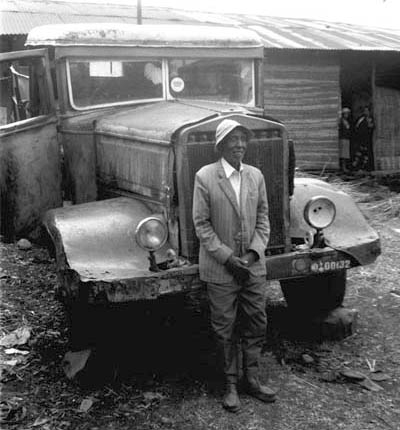Zu Sisai, einem alten Lastwagenfahrer mit eigenem Fahrzeug, das den Spitznamen "Möge-ich-sterben-und erlöst-sein" trägt. Das Fahrzeug ist ein Fiat-Lastwagen, der 1935 als Gebrauchtfahrzeug eingeführt wurde. Sisai ist fünf Jahre auf eine italienische Schule gegangen und spricht gut Italienisch. Auch auf Oromo können wir uns gut verständigen, aber wegen Dereje schwenkt die Unterhaltung immer wieder ins Amharische um.

Sisai und sein Lastwagen namens “Möge-ich-sterben-und-erlöst-sein”
Move mouse over picture for larger version
Sisai got the old lorry from some Italians who had returned to their country. Since then, he has been using it for his transport business. Before the Independence of the Sudan in 1956, he used to transport coffee down to Gambella where it was sold to Greek traders. When the rivers were high, it was taken by ship down the Baro and Sobat to Malakal and then down the White Nile to Khartoum. When the water was shallow, the coffee was taken all the way to Malakal by lorry. Sudanese goods were then taken on the return journey to Gambella and on to Addis Ababa.
During our conversation Sisai pointed to one relatively light-skin younger man. "Anche lui é un mulatto": his father was Greek.
The other night, George, the elderly trader from Gambella, told me that in the Anglo-Egyptian period Gambella was practically a part of the Sudan. He was educated in Khartoum. Before the Derg-Period, there was no proper road connection from Gambella to Addis Ababa.
Bahru Zewde has written a PhD thesis (1976) about Ethio-Sudanese relations between 1898-1935 along the western Ethiopian border.
